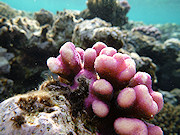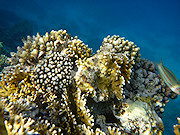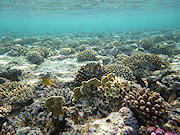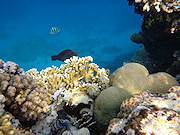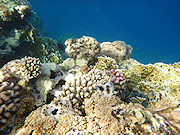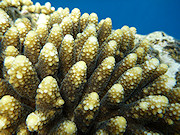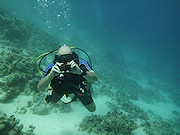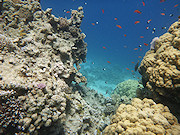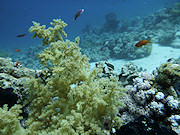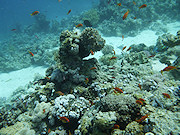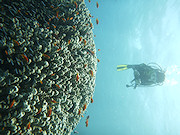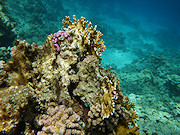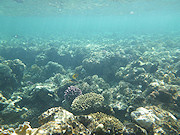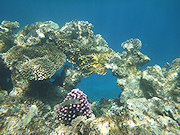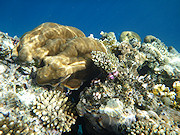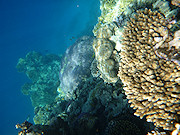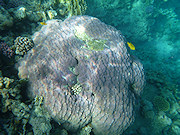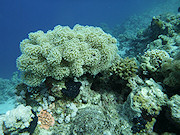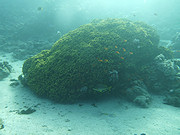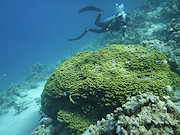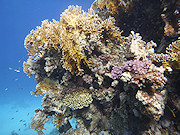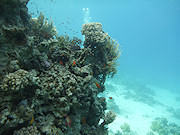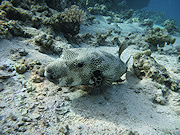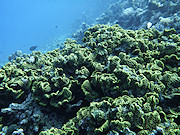Waterproof cameras test 2012 - part I
5. Panasonic Lumix DMC-FT4
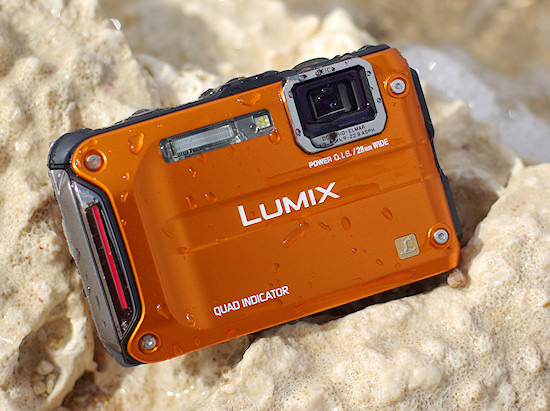 |
Every year at the end of January you can be practically sure the Panasonic company will present a new model of its FT series waterproof camera. It’s been happening since 2009 when the FT1 model was launched. The following years brought us Lumix DMC-FT2 and FT3; this year we were shown the Panasonic FT4. One glance at this chart comparing the specifications of all four models and you know that the producer haven’t introduced any revolutionary changes; in fact they have been used the same lens and LCD screen from the very beginning. You could say this year the situation is the worst because it is really difficult to notice any important differences in parameters of the FT3 and the FT4. Not only they have been equipped with the same sensor but also the FT4’s casing remained unchanged. The only differences can be found in the list of thematic modes available because the constructors limited their number a bit. Slight changes are in the movie recording mode because there is no Motion JPEG coding to MP4. Are these the only differences to be found when you compare the new Panasonic to the older model? The answer to that question we are going to find in our test.
Design and built quality
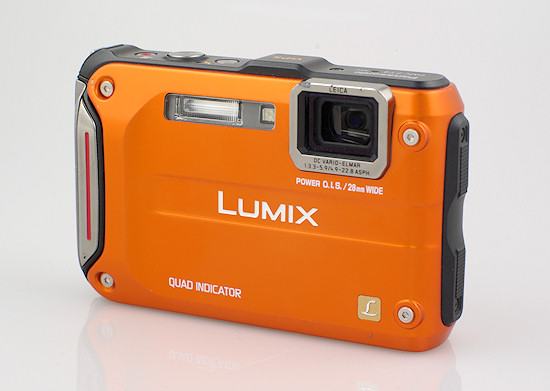 |
As we mentioned before the Lumix FT4 uses the same casing as the FT3 so the build quality and materials are on the same level – in this part we can practically repeat the words we used in last year’s test.
The solidity of the Panasonic’s FT4 casing is beyond reproach. The camera is very sturdy; nothing creaks and there are no slacks as all elements fit each other precisely. The front and back panels are made of aluminum. Luckily it is not brushed, as it was the case of previous models as it influenced the cleaning but we will tell you more about it in the following subsections.
Please Support UsIf you enjoy our reviews and articles, and you want us to continue our work please, support our website by donating through PayPal. The funds are going to be used for paying our editorial team, renting servers, and equipping our testing studio; only that way we will be able to continue providing you interesting content for free. |
- - - - - - - - - - - - - - - - - - - - - - - - - - - - - - - - - - - - - - - - - - - - - - - -
A window protecting the LCD screen at 10 m is pressed to the screen surface quite strongly and in future, after several diving at greater depths, it might lead to a screen damage.
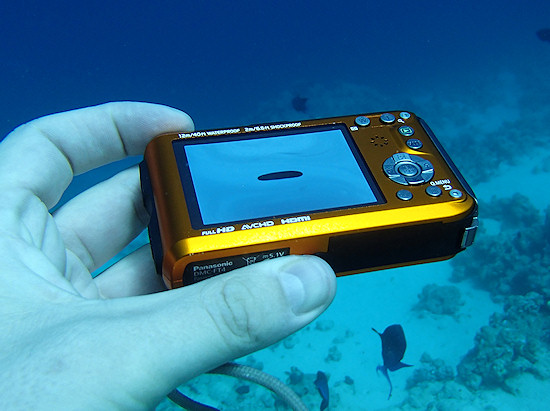 At the depth of 10 m the pressure of water column is twice as big as that of air on the surface. It presses the LCD screen window very strongly and, as a result, it bends inside. |
One of the side panels is in fact a cover protecting an USB and a mini HDMI ports as well as a battery and a memory card slot. Its usage is problem-free – it closes and opens comfortably and it is equipped with a blockade slider which prevents an accidental opening.
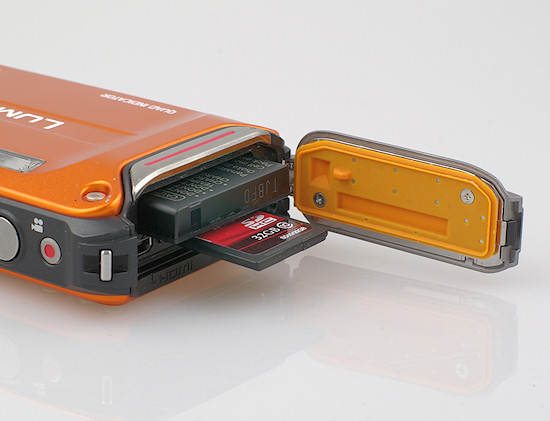 |
The button layout in the FT4 is identical as in its older brother. In this model there is no selection wheel, known from the Lumix FT1 and the Lumix FTW. In previous tests we praised such a solution in underwater cameras because it made switching between available underwater modes definitely easier (especially in Lumix cameras). Unfortunately in the FT4 model we get a MODE button instead which displays a menu with available modes. Right above that button you can find a playback key and W and T buttons, responsible for focal length change. Other manipulators on the back panel are already known from the previous model: among them we can find a MENU/SET button, surrounded by directional controllers which give us a quick access to exposure correction settings, a macro mode, a delayed-action release and a flash. Below the four-way controller there is a DISP. button, responsible for the change of info you see on the screen and a Q.MENU button, which starts the quick menu, featured by almost all Panasonic cameras.
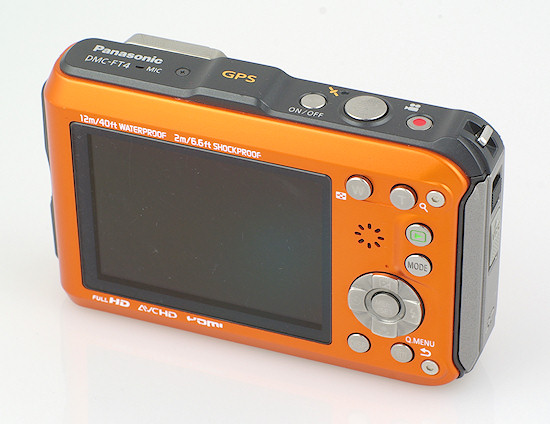 |
On the upper panel traditionally, there is a movie recording button, an on/off switch and a shutter release; it is also a place where you can find a monophonic microphone and a GPS receiver.
Use, cleaning, wear and tear
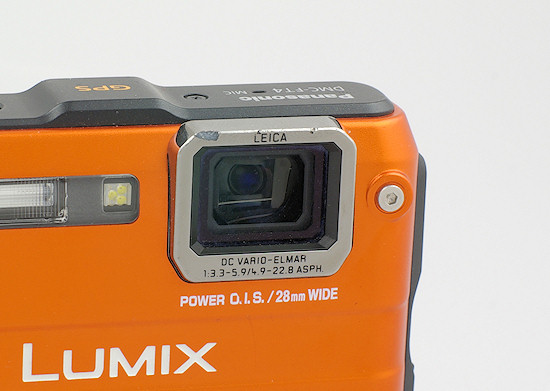 |
Like one year before, the specimen that was sent to our editorial office, had been already tested several times. You could notice some small traces of wear and tear, unavoidable during a normal, everyday usage. Small wonder after returning from our trip the damage of the casing was very similar to that described in the case of the FT3. The chromium-plated element around the lens had already peeled off a lot.
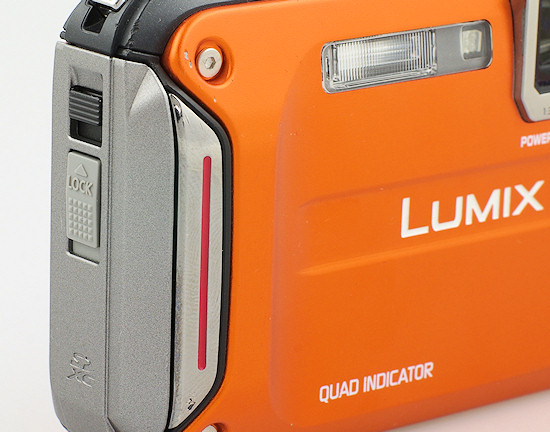 |
Additionally on the front panel we managed to notice small losses on the chromed handle and scratches on the metal plate. There were also some flaws on the LCD screen but, taking into the account the fact that they are superficial and the camera was dropped several times on the sand from about 1.5 metres, you shouldn’t really carp about it.
The cleaning of the FT4 is not the easiest task – all dirt and sea salt can find here plenty of nooks and crannies where they can gather. In order to make it a bit less onerous the producer traditionally included a very useful little brush which removes all dirt from the casing and also from a sealing of the cover – if some dirt is deposited there the camera might lose its waterproof quality. As always such an addition is an advantage of the Panasonic camera.
Additional functions
The Lumix FT4, like its predecessor, is equipped with a GPS receiver. This time we didn’t have any problems with starting it and, after several moments, the camera got the signal from satellites and showed us the info about our current location.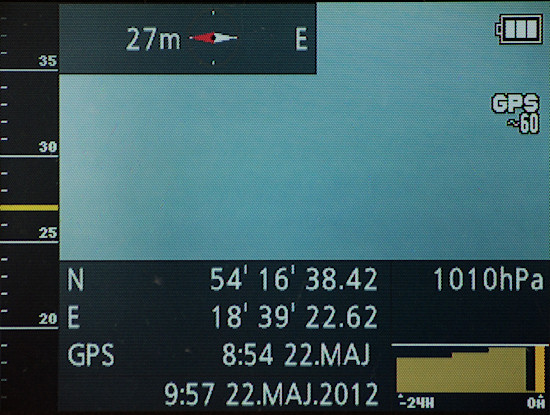 |
The coordinates are, of course, saved in EXIF data which allows you to geotag your photos. The camera also boasts a depth gauge, an altimeter, a compass and a manometer. All these gadgets work as they should but their usefulness during diving is slight especially that here, like in the case of the FT3, we can’t say the depth gauge is exactly precise. Its indications are limited to a yellow stripe which moves between 0 m and 10m. However this stripe’s length corresponds to about 3 m on the aforementioned scale and any movement can be registered only if you descend to a depth of about 5 m. Still its value doesn’t change much and, as a result, it might indicate a depth ranging from about 2 m to 8 m.
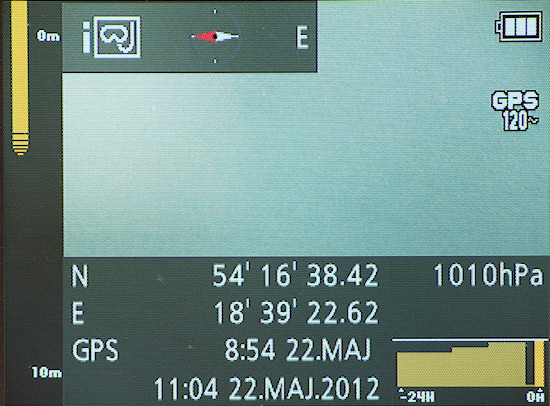 |
Not very accurate, you must admit, especially as it is available only in the “beach and snorkeling” mode and doesn’t work in the “underwater photos” mode; perhaps the producer anticipated the latter mode to be used only with an underwater casing and in that casing, as you know, the pressure doesn’t change with the increase of depth. What’s more the indications of the depth gauge and manometer can be followed only on a specially dedicated screen which is shown above. You can’t display the actual depth on the screen used for photo taking, where only the exposure parameters are shown.
In the FT3 model we complained about the precision of the altimeter but in the newer FT4 model it performed very well. It is true we needed to calibrate it but afterwards the measurements were very precise, without any reading fluctuations. When we went to the first floor we noticed the altitude changed by 3 meters compared to the reading we got on the ground floor. The compass performed equally well, pointing the directions with a good precision.
The Panasonic Lumix FT4 finally was given a fully-fledged panoramic photo mode – you just press the shutter release and move the camera in the chosen direction. You can get 360 degrees panoramas without any problems and the camera joins particular frames splendidly. Unfortunately the quality of pictures leaves something to be desired but still the mere fact that we managed to shoot a panoramic photo under water should be praised.
 Click to enlarge. |
 Click to enlarge. |
Wodoszczelność
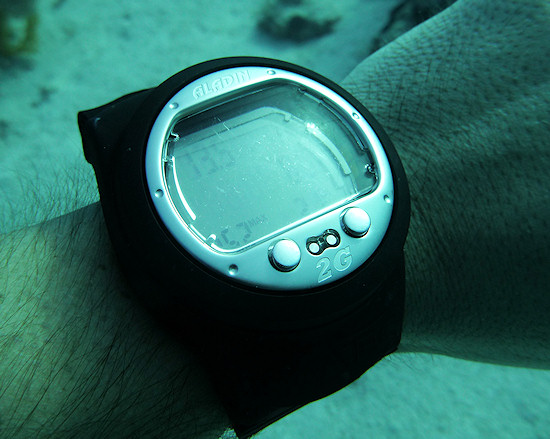 |
Waterproofness
According to the specifications the Panasonic FT4 is waterproof up to a depth of 12 metres. Of course diving as deep you won’t experience any problems with shooting photos but already two meters lower the water pressure blocks some buttons and the shutter release doesn’t react so taking a photo isn’t possible anymore. That’s why a maximum depth we managed to take a photo was at 13.5 metres – it is the second result in our test.
Underwater usage
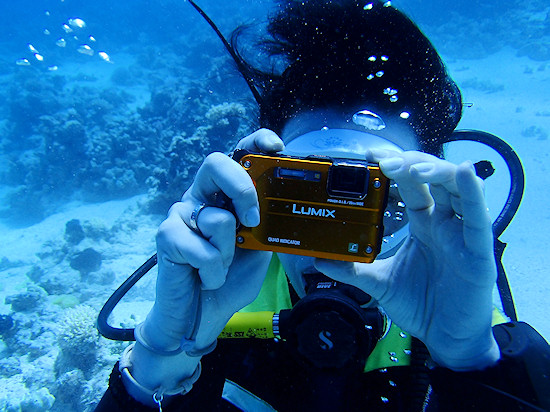 |
In the Panasonic FT4 you can change photographing modes by pressing the MODE button - when you press it you can see the recording mode menu displayed and then, using the directional keys you can select an appropriate photographic mode. The choice can be made between a fully automatic iA mode, “Normal photo” mode (the equivalent of the P mode), “Snow”, “Beach and snorkeling”, “Underwater photos”, SCN” (this option hides a selection menu of over 20 thematic modes) and a 3D photo mode. Although we still miss a comfortable selection wheel, known from the FT1 and the FT2 models, we have to admit switching between underwater modes is not very problematic – it takes just three presses of buttons.
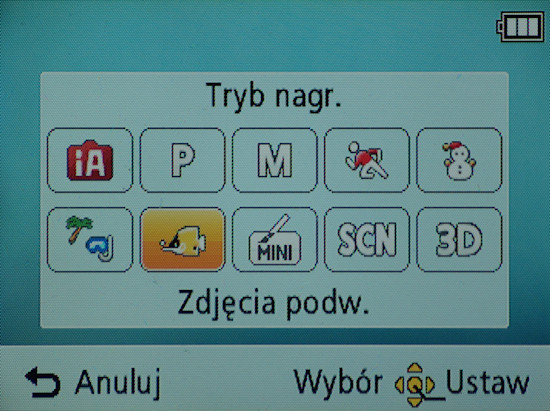 |
In the new model a slightly changed nomenclature, known from the FT3, was kept so we have here two underwater modes: “Beach and snorkeling” and “Underwater photo”. Unfortunately there are still information inaccuracies appearing during the selection of underwater modes. The message concerning the “Beach and snorkeling” mode says that you can take pictures on a beach and under water to a depth of 12 m and the message displayed after the selection of “Underwater photos” mode says that it is the best mode to a depth of 3 m and suggest that above 12 m you should use an appropriate ‘sea’ casing. Once again we deal here with a lot of confusion as the user gets contradictory information; no matter whether you want to swim with the FT4 close the surface or dive deeper you don’t get a clear answer what mode would be actually the best.
The mere switching between the modes is no longer as comfortable as in the case of the old, good FT2 model. There is no mode selection wheel here so we are forced to display the photographic mode menu, pressing the MODE button, and then use the directional keys to chose an appropriate mode. As a consolation in the underwater mode the camera chooses the right colouring for dry land photos. There’s no need to enter the menu for the second time if you want to take a picture right after resurfacing.
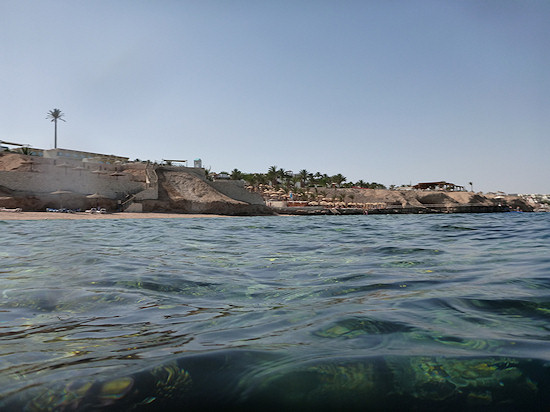 |
Starting the video recording is problem-free – it’s enough you press a dedicated button and the recording starts soon afterwards and is fully automatic. In order to finish your recording it’s enough you press the same button again and the camera, saving the data very swiftly, returns to the photographic mode. We don’t have any reservations about the autofocus speed either because its work is as sensational as in the older model. Also its accuracy remains on the highest level - even when the sea was rough and we wanted to shoot in the macro mode we didn’t experience any focusing problems.
For zooming you need two buttons, W and T, positioned on the back panel. As in the case of the Canon D20, it demands some bending over backwards but instead you get an excellent access to the aforementioned video recording button, right next to the shutter release. You get nothing for nothing.
We can’t express any reservations concerning the quality of images, displayed on the LCD screen used in the tested Panasonic. Even against bright sunlight everything is clear and contrasting so you won’t have any problems with cropping. Although in this case the FT4 fares very well, you should remember that it is a 2009 construction and its parameters are about outdated now – 230 thousand pixels is a bit too little. I think the implementation of a bigger screen with higher resolution in the next model is something really worth considering.
Traditionally the producer didn’t forget about a wrist strap with a tightening clasp. Because of this simple solution you don’t have to worry that the camera will slide off your hand during swimming and will sink to the bottom of the sea. Small detail but nice – especially those testing divers who often have to swim with several cameras hanging over their hand will appreciate it.
Quality of underwater photos and movies
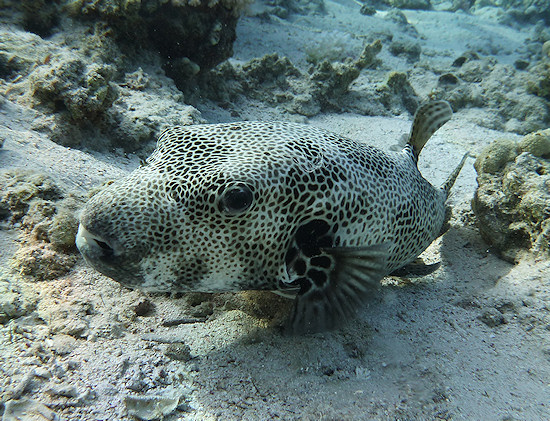 |
When it comes to the colouring of underwater photos taken by Lumix cameras nothing has changed since the FT1 model. Seemingly everything in the FT4 looks the same- we are still offered the same underwater modes but it seems that in the case of the first one, called “Beach and snorkeling” the programmers have made some changes. The photos gained in colouring compared to the performance known from the previous FT series models. The images are no longer so pale and saturated by the blue dominant. It should be considered as an advantage, especially that we like the colour of the sky on the photos taken by the FT4.
In the „Underwater photos” mode we didn’t notice any changes – it still performs very well at greater depths, dealing with the elimination of blue cast on photos. Let’s remind here that this mode will be useful also during snorkeling when we want to photograph objects situated at a depth of e.g. 3 metres because you register the sunlight reflected from that object which should go 6 m in the water (3 meters to the object and 3 next meters after the reflection toward the surface and the photographer). Otherwise the image is as devoid of colours as if you took a photo of an object from the distance of 1 meter when you are 5 meters under water.
You must remember that removing blue dominant from a photo is often performed by saturating red and orange hues - the colours which are first absorbed by water particles. If an object not deeply submerged and positioned close by is included in your frame, you should take into account the fact that it might be rendered as unnaturally purple. In order not to sound groundless we present several examples of underwater scenes, photographed using the thematic modes described above. We hope it will help to understand in which situations a particular mode should be used. Still you will have to switch between the modes if you want to reach the best results possible.
| „Beach and snorkeling” mode | „Underwater photos” mode |
|
|
|
|
|
|
|
|
|
|
|
|
|
|
|
Traditionally when there are problems with the automatic white balance in underwater modes we can always get some support in the form of the aforementioned possibility of manual WB regulation – you can choose the right colouring through 21 stops starting from a strong blue dominant and ending with red. Below you can see photos illustrating the full range of smooth white balance regulation.
| The range of white balans regulation in „Beach and snorkeling” mode |
|
|
|
|
|
|
| The range of white balans regulation in „Underwater photo” mode |
|
|
|
|
|
|
When it comes to the macro photography the Panasonic FT4 fares splendidly,- you won’t have major problems with taking interesting close-ups of underwater coral reefs. Apart from that all photos are detail-rich and exposed properly and the decrease of image quality on the edge is slight. In difficult conditions, when the water is cloudy and the camera pointed against the sunlight, the photos definitely lose their colouring and contrast but such a decrease doesn’t differ from the level you should assume to be standard.
In green waters with poor visibility the photos noticeably lose a lot of details but there are no major problems with the speed and accuracy of the autofocus. In the case of the FT3 we praised the colouring of photos taken in a lake at a depth of about 6 metres in the “Underwater photo” mode but in the “Beach and snorkeling” mode you could notice a green dominant. Unfortunately in the case of the FT4 the green dominant is distinctly visible in photos taken in both modes – as a result their colouring seems to be similar.
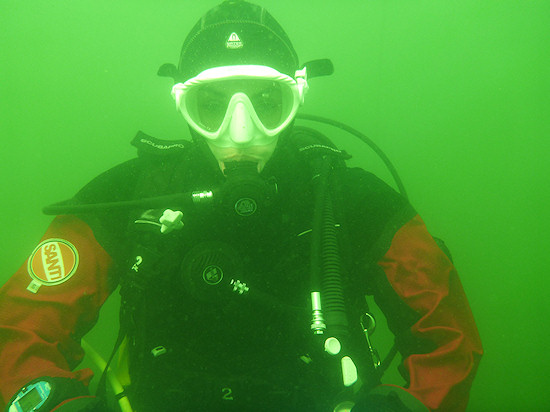 Photo taken in a lake at about 6 m with the visibility of 5 m. „Beach and snorkeling” mode was used. Click to enlarge. |
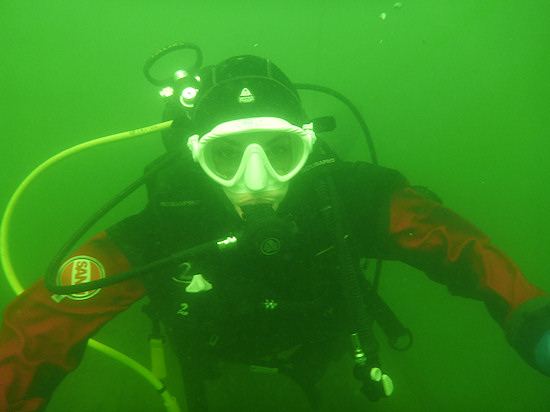 Photo taken in a lake at 6 m with the visibility of 2-3 m. „Underwater photo” mode was used. Click to enlarge. |
During the movie recording the camera uses such white balance level which is attributed to the current photo mode – before you start the recording it would be good to remember about the selection of the right mode because in shallow water the “Beach and Snorkeling” mode fares definitely better and at greater depths you should use the “Underwater photo” mode.
When you watch movies you shot during snorkeling you can complain about pink cast which appears from time to time (especially when it comes to shots against bright sunlight) and not very vivid colouring. Apart from that the detail rendering in more dynamic scenes and the contrast aren’t on the highest level.
The movies shot at a depth of about 8-10 m look decently well. You can still carp about lack of details but it can be clearly seen the programmers have applied themselves to eliminating blue dominant in images. Still it is far from the level presented by the Canon D20.
Summary
As always we start with the list of pros and cons:
-
Pros:
- Solid workmanship,
- Fast work of the camera,
- Very quick and accurate autofocus,
- A wrist strap with a tightening clasp,
- A brush included in the accessory kit, which makes cleaning easier,
- The right weight of the camera which makes it perform well under water,
- User-friendly Quick Menu button,
- Very good detail rendering in underwater photos,
- Very good image colouring in the “Beach and snorkeling” mode,
- Satisfactory colouring of photos taken at greater depths,
- Right colouring of photos taken on dry land in underwater mode,
- A possibility of fine-tuning the white balance in underwater modes,
- A decent colouring of movies recorded at greater depths in the „Underwater photo” mode,
- Panoramic photo mode,
- Built-in compass,
- Built-in GPS module,
- Built-in depth gauge and manometer.
- Not very durable chromium element around the lens,
- Colours of movies taken in the “Beach and snorkeling” mode could have been more vivid,
- Low detail rendering and contrast of movies,
- Weak colouring in green waters,
- Low resolution of the LCD screen,
- LCD protecting window is too soft,
- Confusing descriptions of underwater modes.
Cons:
The Panasonic Lumix DMC-FT4 costs currently about 1450 PLN and, with such a price tag, it remains the most expensive camera in the test. You have to admit the producers charge high prices for their product taking into account the fact that 99% of this construction is based on the last year’s model and there were implemented just slight software changes. However, you have to admit all these changes did the tested Lumix some good. In most cases you can enjoy a slightly better colouring of underwater photos and the “Beach and snorkeling” mode was improved as well – it was one of our wishes after the test of the FT3. However, the quality of movies, so good one year ago, now is hardly impressive. The competitors have moved forward and the Panasonic stays put.
One year ago we praised the FT3 for the colouring of photos taken at greater depths; this year we would have repeated the same opinion if only the Canon hadn’t raised the standards significantly. Now we can only hope that next year the FT5 will prove Panasonic haven’t said the last word yet.
Despite that fact the FT4 remains one of the most universal underwater cameras. It will perform nicely during snorkeling and a decent quality of photos taken at great depths and waterproofness of over 13 meters means scuba divers will be satisfied as well.
Sample underwater movies
| AVCHD, 1920×1080 pix, 25 kl/s, 12 s, 25.5 MB |
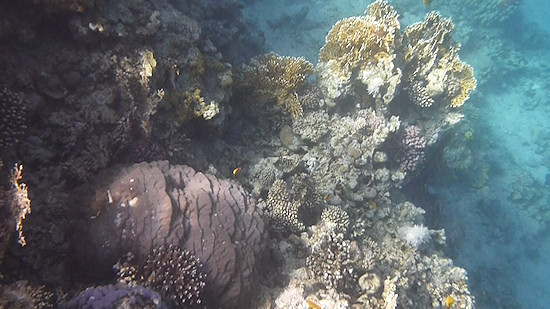 |
| AVCHD, 1920×1080 pix, 25 kl/s, 12 s, 24.8 MB |
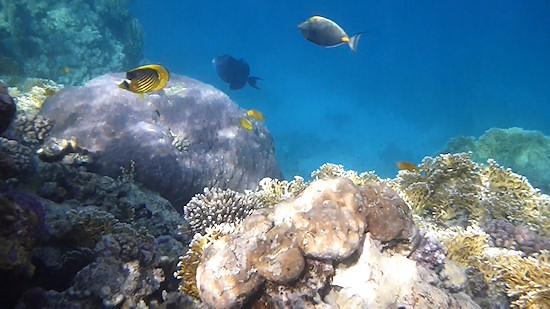 |
| AVCHD, 1920×1080 pix, 25 kl/s, 19 s, 38.1 MB |
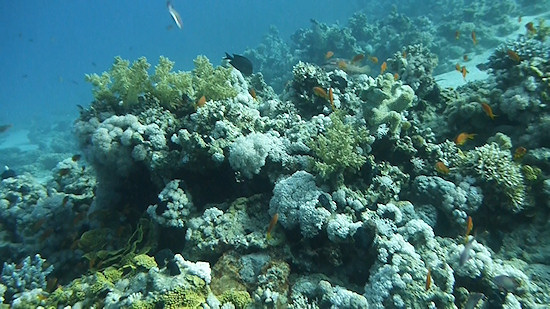 |
| AVCHD, 1920×1080 pix, 25 kl/s, 21 s, 42 MB |
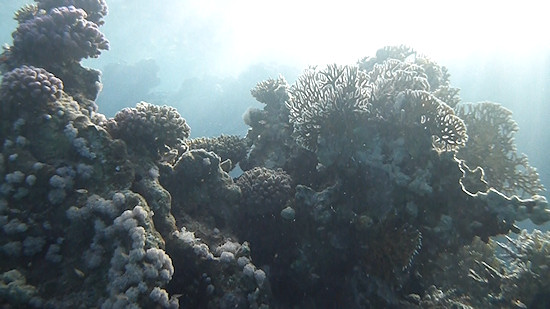 |
Sample underwater photos




